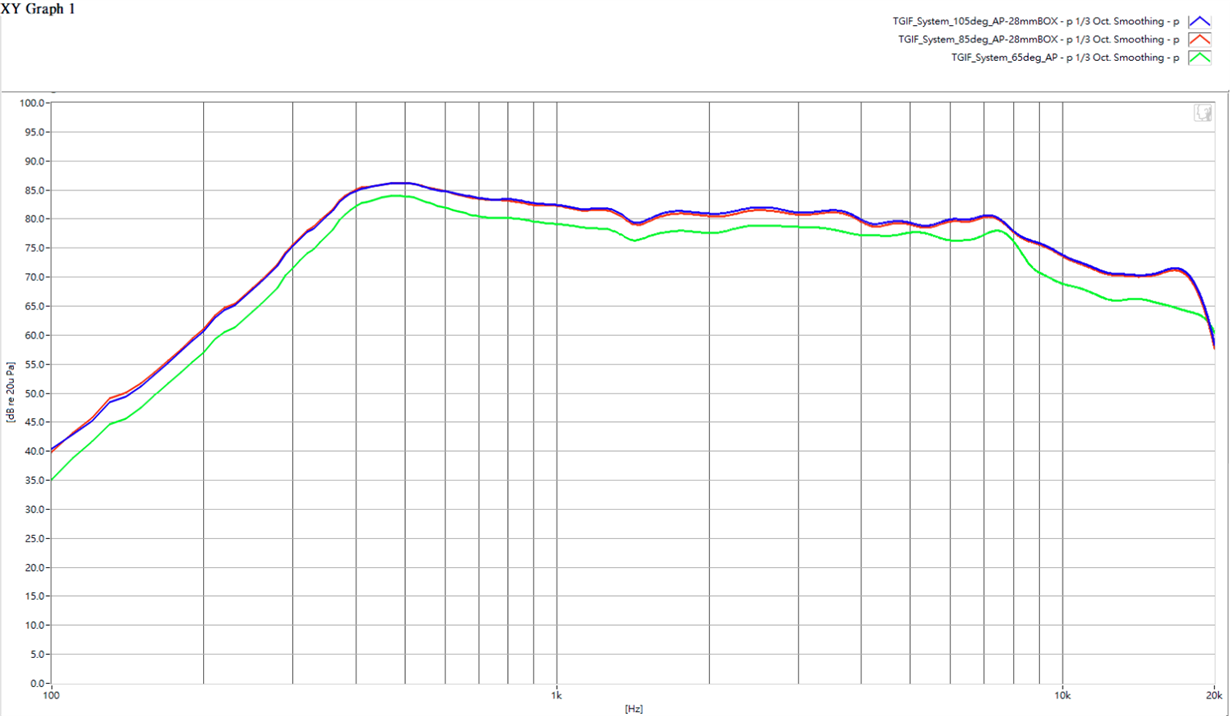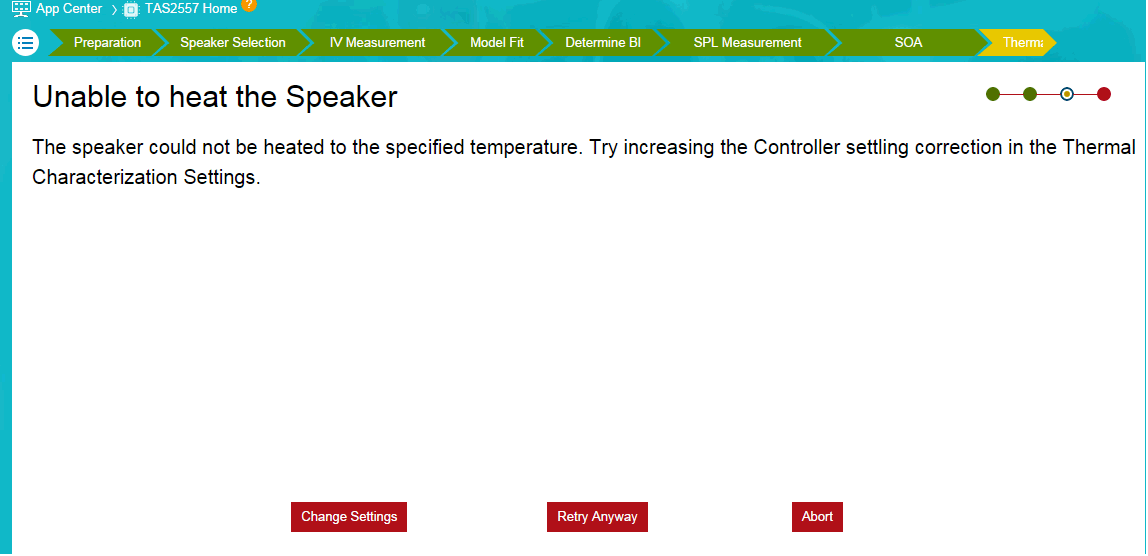Other Parts Discussed in Thread: TAS2557
Hi
1. According to Taiwan FAE recommendations (Speaker: Ø28x7.5mm; 3W; 4ohm)
a. Set the delta temperature from 65deg => 85 and 105 deg
b. Close the feed forward
c. The frequency response does increase
As follows
Although different temperature settings can change the output wattage.
However, the actual measured voltage on the speaker is 1.78 Vrms, which is about 0.79W.
It is very small.
2. New speaker Characterzation issue. (Speaker: Ø42x18.8mm; 3W; 8ohm)
Thermal test shows unable to heat the speaker (set to delta thermal 85deg).
Ask me to adjust "Controller settling correction".
I have changed to max 40% and min. 1%, the results are the same.
What other parameters need to be modified to be able to run it?
thanks,
TW



